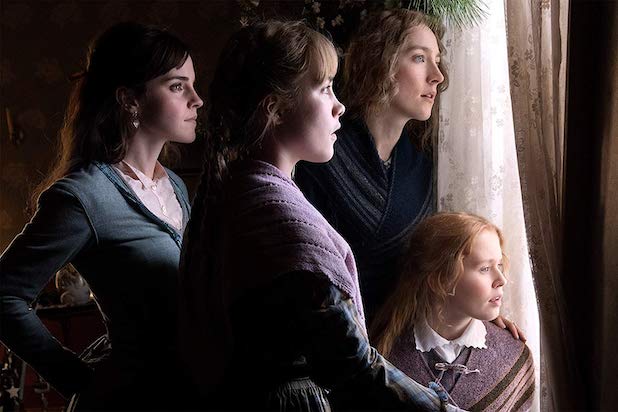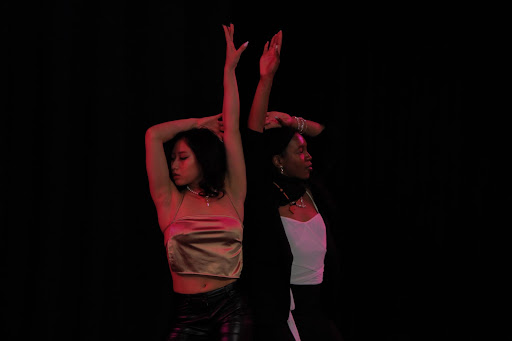Minor spoilers ahead.
As an entire decade comes to a close, so does this year’s season of movies, with “Little Women” acting as the cherry on top of an otherwise bland-flavored banana split (sorry, it’s hard to beat the excellence of 2017 with “Lady Bird,” “Get Out,” “Baby Driver,” “Call Me By Your Name,” among others). Premiering on Dec. 25, “Little Women” no doubt shines with the untethered brilliance of Greta Gerwig’s direction, a round of knockout performances by the cast, and an overall marvelous adaptation of the classic tale for modern audiences.
“Little Women” is adapted from the book by Louisa May Alcott of the same title. It was published in 1868, just after the American Civil War, which is around the time that the story takes place.
It follows four sisters – Jo (Saoirse Ronan), Meg (Emma Watson), Amy (Florence Pugh), and Beth (Eliza Scanlen) who befriend their neighbor of the same age (Timothée Chalamet). The story starts while they live with their poor mother (Laura Dern) while their father is off fighting in the Civil War and continues until about seven years in the future when the sisters are facing the end of childhood. Other adaptations of the movie include Katharine Hepburn starring as Jo in 1933, June Allyson in 1949, and Winona Ryder in 1994. The other adaptations have all been wildly successful in their generations and feature stacked casts (in true “A Star is Born” fashion), proving “Little Women” to be a timeless story.
Written and directed by Greta Gerwig, whose only other solo writer/director credit is for the 2017 coming-of-age film “Lady Bird,” this movie brings a story from 1868 and makes it as relevant and important as ever. The completely female-driven story is a reminder for how important female narratives can be in inspiring ambition, without neglecting the beauty or satisfaction of a love story. Having a female director and writer and a powerful female cast is the chef’s kiss that makes this a standout movie of the year.
Saoirse Ronan makes more strides in her budding career as Jo March, the main protagonist and tomboyish sister. After starring as the titular character in Gerwig’s solo directorial debut “Lady Bird,” Gerwig and Ronan have become the movie industry’s most reliable pairing. As Jo, Ronan channels the same playful and rebellious energy she had in “Lady Bird,” although this time, the late-1800’s version. In this performance, she tackles Jo’s courage and stubbornness while also letting her vulnerability seep through.
Another actress that was outstanding in her role was Florence Pugh as Amy, the youngest and most selfish March sister. The world was introduced to Pugh this year in her breakout performance in Ari Aster’s film “Midsommar,” where she slowly lost her sanity at a Swedish commune. In “Little Women,” Pugh flexed her range as she flipped back and forth between playing her 12-year-old self and her 20-year-old self. The little nuanced differences in her acting helped audiences see how Amy had grown from a pouty, selfish child wanting to be rich and famous to a wiser, less-selfish adult who still wants to be rich. She was funny, yet very posh and feminine, and she was the only actress able to show the growth that her character went through.
Along with Ronan and Pugh, Timothée Chalamet turned in an outstanding performance playing the girls’ neighbor, Laurie. The character is very multidimensional – sometimes shy, yet wild and playful – and Chalamet played the nuance well. Some moments you hate him for being an intrusive man (think his curt attitude with Meg at the dance), and other times you fall in love with his naturally seductive nature that landed him as one of the most loved young adult actors. The world is truly thirsty for Timothée Chalamet, and he did not disappoint in scenes such as seducing Amy on a picnic blanket in a Paris park, opening his heart to Jo on a grassy hill, and sporting a boyish charm on a frozen lake with both sisters.
Although the book was written in chronological order, Gerwig decided to bounce the story around between past and present. A risk that paid off, this direction revealed parallels in the two timelines showcased. For example, during a quintessentially sad moment between Beth and Jo, Gerwig decided to intercut a scene between the sisters from the past with almost the same exact scene in the present with a different ending in order to drive home the emotional impact that Jo, and in turn the viewer, would feel in that moment.
Gerwig also played around with colors in the film, having the present-day scenes be much darker and duller than the lively memories from the past. The choice not only cleverly distinguished the two time periods, but it also reestablished the message that the sisters’ childhoods were officially over.
“Little Women” is definitely a feminist movie, but not so in-your-face that it comes off as preachy or forced. Since it takes place in the late-1800s, the women in the story are often demeaned or belittled by society or by the men they encounter. As Jo tries to sell the novels and stories she writes, the publisher repeatedly tells her that if a woman is the protagonist, she should be married (or dead) by the end or else it won’t sell. Jo, being stubborn with a fiery temper, doesn’t want to conform to a certain ideal that women have. In one pivotal moment of frustration, she vents her feelings to her mother in a scene that could alone be enough to secure a Best Actress nomination at the Oscars this coming year.
“I just feel like women they, they have minds and they have souls as well as just hearts. And they’ve got ambition and they’ve got talent as well as just beauty. And I’m so sick of people saying that, that love is just all a woman is fit for,” Jo declares. The brilliance of this movie relies on the message delivered in this scene and in the entire film: women can do anything they want and shouldn’t be held back by society’s expectations of finding love and settling down. She can do so much more than what is expected, and if she chooses to do what is expected (i.e., pursue romance), her choice is still valid. True femininity is not restricted to one behavior or singular value; it plays out in multiple ways such as ambition, talent, and beauty. How a woman decides to show her femininity is what makes her a true woman, such as Jo’s fiery drive and playful boyish nature, Meg’s humble beauty, Beth’s kind heart, and Amy’s willingness to find true love.
The ending of the film cleverly invites the audience to choose what they think really happened. If one values romance and true love, then swoon accordingly to Jo’s final kiss at the train station. Or, if one values ambitious women making their voices heard, subscribe to the against-all-odds success of Jo’s novel. Even with different interpretations, everything nicely ties up in a uniquely meta way.
Impressively, a story written just after the Civil War resonates rather well with modern audiences. That resonance owes a lot to Gerwig’s adaptation, which inspires viewers to value their femininity, whatever that means to each person, without discriminating against the male ally. A must-see this Christmas season, “Little Women” accomplishes what it sought out to do and proves itself to be a powerful piece of art at the end of another decade.
Feature Image: Courtesy of The Wire, Wilson Webb, and Columbia Pictures.



















































































































Anonymous • Jan 13, 2020 at 1:39 pm
5